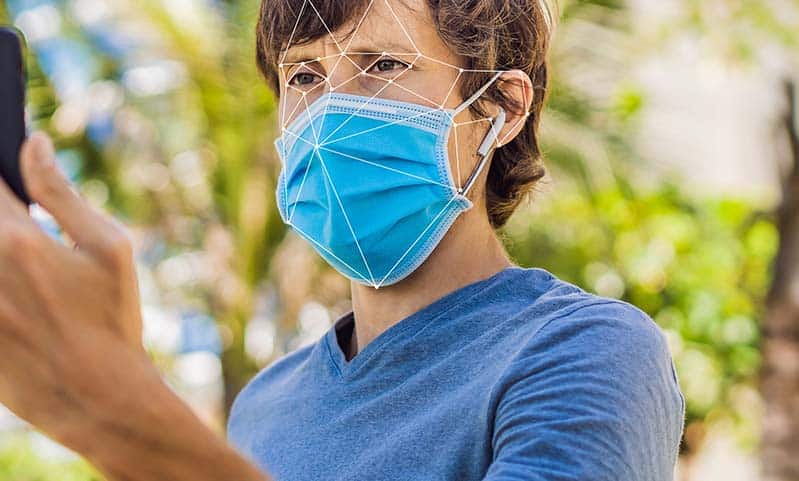Rest assured that Big Brother is still watching you. But, he has a hard time seeing past your surgical or other mask.
Before the pandemic, most facial recognition software focused on the entire face.
Now, there is a race to create a program which focuses on the area around the eyes. Retinal and other scanners are already available, but they are much more expensive.
Shaun Moore is the CEO of Trueface, a company that provides security for Air Force bases. He said his company hopes to have advanced software available by this fall.
Facial recognition has come under fire from privacy advocates, both because of its possible inaccuracy and the potential for abuse.
How Facial Recognition Might Affect Your Car Crash Claim
Facial recognition and video surveillance technology often co mes into play in hit-and-run claims, especially in criminal court.
In some jurisdictions, the percentage of hit-and-run drivers caught is less than 10 percent. So, surveillance is an important tool.
In criminal court, the burden of proof in these cases is beyond a reasonable doubt.
Since anyone can get into a car and drive it, especially if it’s a shared vehicle, in order for charges to hold up in court, a witness needs to see the driver behind the wheel at or near the time of the crash.
That witness could be an eyewitness or, even better, a facial recognition or other camera.
Electronic evidence is preferable because, if the gadget is working properly, computers are not biased or incorrect.
In civil court, the burden of proof is only a preponderance of the evidence (more likely than not). That’s the lowest standard of evidence in New York.
So, facial recognition might not be needed for liability purposes. Typically, for this portion of the trial, a New York personal injury attorney need only identify the owner.
It is more likely than not that the owner was the driver, unless the owner has an ironclad alibi.
However, facial recognition might be relevant for damages purposes. Jurors like to know that they are demanding the right person to pay compensation.
This compensation usually includes money for economic losses, such as medical bills, and noneconomic losses, such as pain and suffering.
Other Kinds of Electronic Evidence
Facial recognition might be one of the newest forms of technological evidence, but such proof has been available for quite some time. Event Data Recorders appeared in the 1970s and slowly became standard equipment.
By 2005, half of all cars on the road had one of these devices.
Capability varies by make and model. Typically, however, these gadgets measure and record a wide variety of crash information, such as:
- Vehicle speed,
- Engine RPM,
- Steering angle, and
- Brake application.
This information could be critical in a car crash claim, but it is not always available.
New York has very strong vehicle information privacy laws. Typically, attorneys must obtain court orders before they can access EDRs.
Furthermore, many EDRs are very sophisticated devices. An attorney needs much more than a laptop and a screwdriver to access this device and download the information on it.
That’s assuming the device is available. Frequently, insurance companies destroy totaled vehicles in a matter of days. If that happens, any physical evidence, including the EDR, is lost.
To prevent that outcome, attorneys send spoliation letters to insurance companies. These letters create a legal duty to preserve all potential physical evidence in the case.
That includes the EDR. Unless an attorney sends this letter within a few days after the crash, it might already be too late.
A few vehicles, mostly commercial vehicles, also have Electronic Logging Devices. ELDs are often compelling in drowsy driver claims. These devices are attached to the vehicle’s drivetrain.
So, these gadgets offer conclusive proof as to the driver’s hours of service.
Once again, an attorney must act very quickly to preserve such evidence, usually by sending a spoliation letter.
Drowsy driving claims are especially common in large truck accidents.
Most companies pay drivers by the load and not by the mile. So, these drivers have a financial incentive to stay on the road as long as possible.
Additionally, during the coronavirus pandemic, the Federal Motor Carrier Safety Administration waived some HOS rules.
Electronic evidence is often critical in accident claims. For a free consultation with an experienced personal injury attorney in New York, contact Napoli Shkolnik PLLC.
